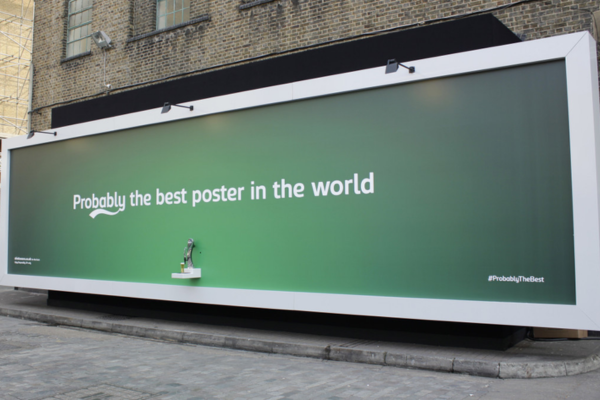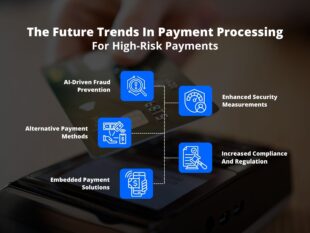The Power of Interactive Ads: Transforming How Brands Connect with Consumers
by Barsha Bhattacharya Blog 02 July 2025

With more competition in the digital space than ever and shorter attention spans than ever, the days of successful and cost-effective advertising campaigns in traditional advertising are over. That’s where interactive ads come in.
They are transforming static campaigns into dynamic experiences that invite users to participate, engage, and respond in real time. It is not only a revolution in ads, but a complete transformation of the consumer’s and brand’s relationship.
Follow along if you want to learn about the importance and power of interactive ads going forward.
What Are Interactive Ads?
To truly understand the power of interactive ads, we need to get the basics right. Interactive ads are digital advertisements that require audience participation.
Instead of passively watching a banner or video, users will be able to interact with content, such as left-clicking, right-clicking, swiping, replying to questions, and making choices that affect what they will see next.
They are usually presented via social networking, mobile application programs, websites, and video. From playful quizzes and product configurators to 360-degree videos and gamified experiences, interactive ads come in a variety of forms.
This is done to engage users more and spend more time with the brand, and to increase conversions by developing a more personal and memorable user experience.
The Reasons Behind the Effectiveness of Interactive Advertising
Interactive advertising is not merely a trend; rather, it is a response to the consumeristic behaviour prevalent on the modern internet. Users are no longer mere consumers of content; they have become active users. They want to be free, personalised, and recreational. Here’s why interactive ads are becoming essential:
Higher Engagement Rates:
One of the most significant aspects of interactive ads is their ability to engage users. In other words, they compel or move the audience to make a choice. Some experts might say that these advertisements innately come with a potential CTA.
Also, most users tend to remember active experiences. Thankfully, an interactive advertisement can accomplish that task. One prime example of a good interactive advertisement is ‘Choose Your Path’ by Volkswagen. The campaign invites users to take an active part in the campaign. Therefore, making it more engaging and impactful.
Better Recall of Brands:
The primary job of an interactive advertisement module is to engage the audience. However, it is also about getting people to remember the brand. Brand recall ensures returning customers. By creating a lasting impression, you are making your brand more recognisable and organic.
One good interactive ad campaign of recent times is the Domino’s Pizza Hero. Domino’s Pizza allowed users to customise their pizza from scratch. This involved users in the pizza-making process and left a lasting impression.
Enhanced Data Collection:
Data is the king of all things. Businesses cannot function without proper data. This is where an interactive advertisement can step in. A unique power of interactive ads is that they are great for data collection. This is another key advantage of interactive ads that is not highlighted enough.
User choices can be used to study what the general population wants from your brand. Therefore, allowing businesses to gain a better understanding of what the user base wants from their brand. Hence, enhancing the overall selling clarity.
Better conversions are made:
When people have interacted with a site, the likelihood of them taking a subsequent step, such as visiting, registering, or making a purchase, is increased. Engagement makes the user more likely to that much-needed conversion.
Brands that have actively used interactive ads can attest that people showed more interest in their products going forward. The reason behind this is that these advertisements make people feel that an experience is created just for them. Allowing for better conversion rates.
Examples of Effective Interactive Ads
The power of interactive ads lies in their versatility, which allows them to be implemented anywhere. In other words, these advertisements come in various shapes and sizes. Here are some popular variants of interactive ads that you may encounter while exploring this niche.
1. Gamified Ads
Brands can entertain users through ads, such as those from Nike and Coca-Cola, while also selling their products in the process, often in a game-like style. They promote a higher level of time and emotional attachment, either by assisting the character in overcoming an obstacle or earning gains.
2. Interactive Video
They also provide shopping videos and a branching storyline (where the users determine the direction of the story), and this makes it possible to make the viewer a character. It is especially effective for fashion, travel, and lifestyle companies.
3. AR Experiences Augmented Reality (AR)
Advertisements offered by retailers such as IKEA and Sephora also enable users to get instant access to products they see on TV, as they can view the products in their living rooms or try out the colors of lipsticks on their phone cameras.
4. Quizzes and Polls
Non-stop interactive quizzes, such as ‘to ask or not to ask,’ ‘the perfect product to buy,’ and personality tests, make for outrageous interaction on Instagram and TikTok. They are contagious, fun, and humorous.
Consumer Appetite in the Future
As technology advances, interactive ads will only become more immersive. With artificial intelligence, virtual reality, and voice-controlled assistants, brands will have the opportunity to personalise the real-time experience based on customer behaviour. One-to-one interactivity will not only be a novelty but a presumption.
The scale of interactivity of the adverts included in the omnichannel strategy will also increase, a smooth connection between the online and in-store points of contact and sparkle across platforms.
Conclusion
The shift toward interactive ads reflects a broader change in consumer behaviour: people no longer want to be talked at—they want to be talked with. This means that brands will have to rethink traditional advertising experiences and invest in two-way modes of communication.
The power of Interactive ads is that they provide a sense of belonging to consumers, and thus, they will be more connected, more engaged, and will yield even more positive results.
Interactivity is no longer a choice of the past; it has become a matter of business competitiveness that is more important this year than it has been in past years.



































































































